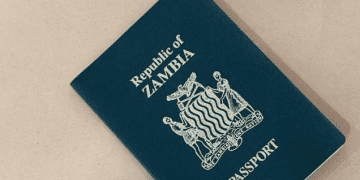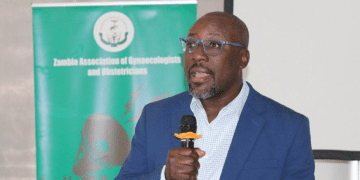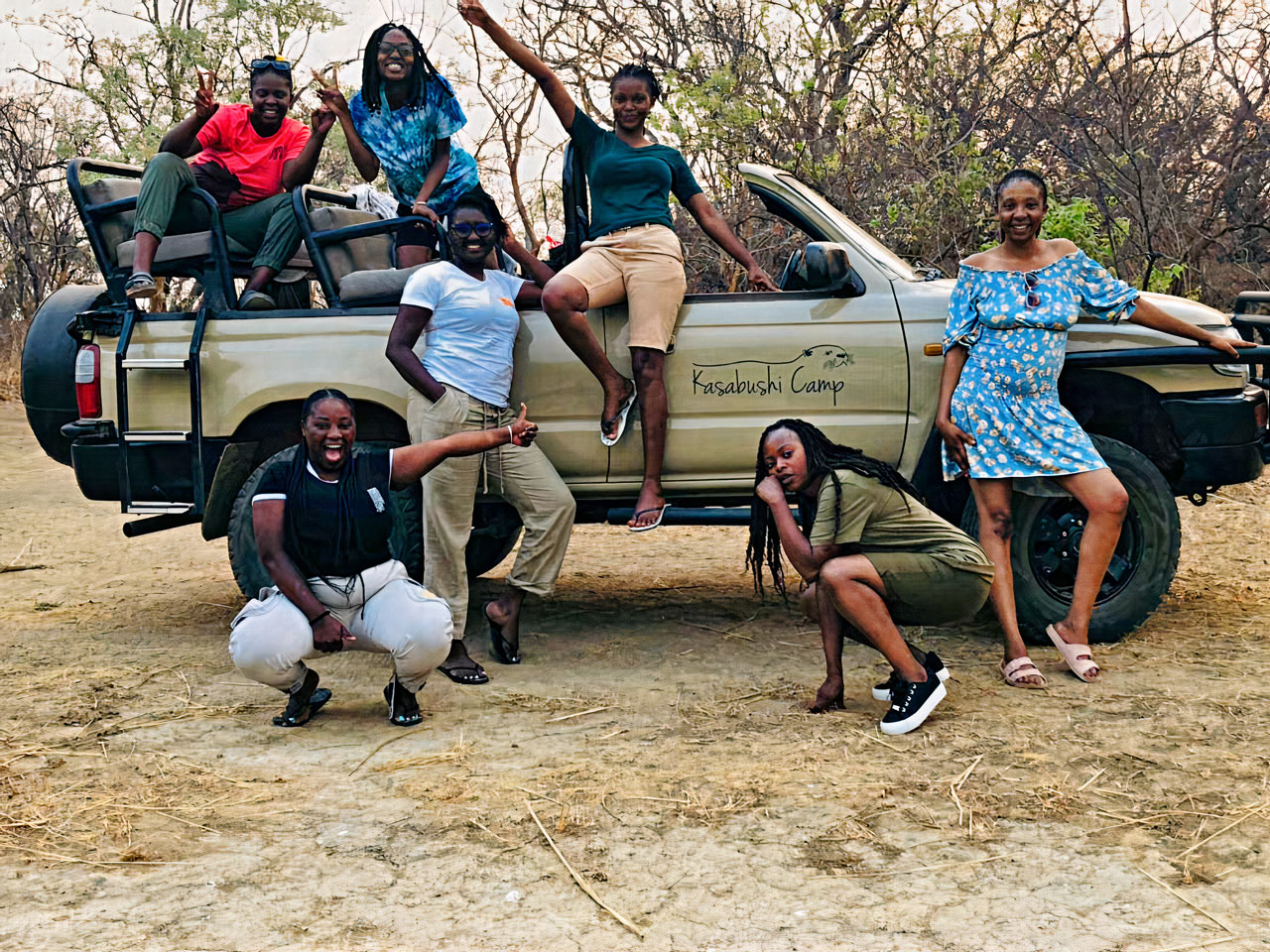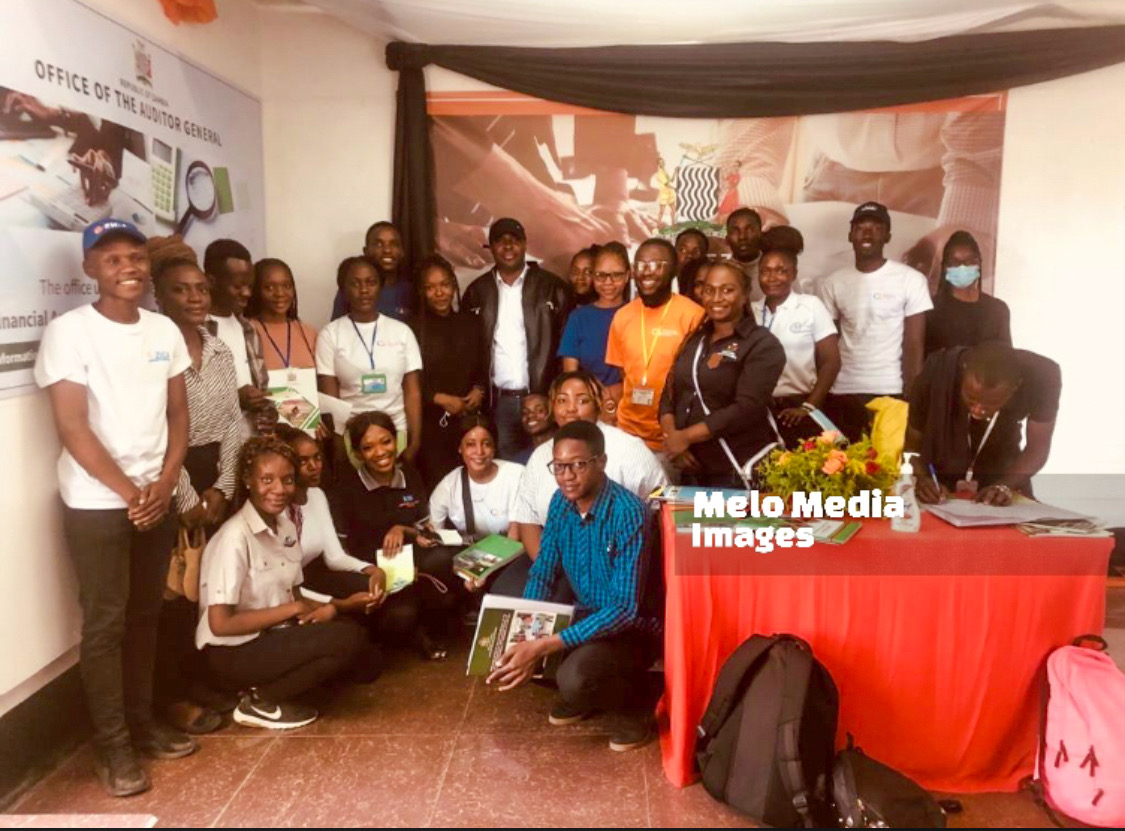By
DR. O’BRIEN KAABA
UNZA LECTURER
A few days ago, the leaders of Linyungandambo, a Lozi self-determination advocacy group, published a letter dated 20November, 2022, addressed to President Hakainde Hichilema, in which they seek a permanent solution to the abrogation of the Barotseland Agreement of 1964. In the letter they purport to accept the abrogation of the Agreement and seek to secede from Zambia. This development is not new. In March 2012, for example, the Barotseland National Council (BNC), the highest decision-making body in the traditional Barotseland government, unanimously voted to secede from Zambia. The decision was premised on the fact that the Zambian government had unilaterally abrogated the Barotseland Agreement 1964 under which Barotseland agreed to proceed to Independence as part of Zambia.
The BNC took the view that the abrogation of the Barotseland Agreement by the Zambian government entitled it to repudiate its own obligations under the Agreement and freed it to pursue the course of self-determination. In the words of the BNC, “The people of Barotseland shall exercise their right to revert Barotseland to its original status as a sovereign nation, so that the people of Barotseland shall determine their political, cultural, social and economic development.” The BNC resolutions are, however, very clear that the decision to cede were premised on the Zambian government’s failure to honour its obligations under the Barotseland agreement. Honoring the agreement would presumably settle the dispute. This seems to be the desire and secession is only to be resorted to in the instance that limited self-determination is not forthcoming. In a letter to President Chiluba in 1994, for example, Litunga Ilute Yeta emphatically states: “We are not seceding and we shall not secede from Zambia. However, we feel that government should respect and honour the terms and conditions of the Barotseland Agreement of 1964.”
The BNC decision of 2012 should be put in context. It was preceded by widespread protests in Barotseland in 2010 and 2011 which were violently suppressed by police, leading to several deaths, enforced disappearances and mass arrests of some Barotse activists. A commission of inquiry into this violence, led by Rodger Chongwe, recommended the reinstatement of the Barotseland Agreement. This was after conducting public hearings in Western Province where the Commission received overwhelming submissions to that effect. The Zambian government, however, declined to heed this recommendation. President Sata, who had promised to restore the Agreement while campaigning for the presidency in 2011, reversed his position and indicated that he would neither implement the recommendation nor make the commission’s report public.
In this article I try to demonstrate that Linyungandambo has a genuine concern and that a lawful and constitutionally viable solution can be found. To give more context to the problem, I start by narrating the special status of Barotseland and then demonstrate how the Barotseland was abrogated. I end by proposing how the problem can be resolved through an accommodative design of the constitution.
UNDERSTANDING THE BAROTSELAND AGREEMENT AND THE SPECIAL STATUS ACCORDED TO BAROTSELAND
In order to understand the agitation around the Barotseland Agreement, it is important to place the issue in a wider context and to trace the special history of Barotseland. Writing about Barotseland in the context of independence politics, Mulford noted that “Barotseland’s most distinctive feature has always been its isolation from the rest of Northern Rhodesia.” This is a correct observation as, from the beginning of colonial rule, Barotseland enjoyed a status that somewhat set it apart from the rest of the colony of Northern Rhodesia.
Confronted by external and internal threats to his power, King Lewanika of the Barotse signed a number of concessions or treaties in the late 1800s, heralding the onset of colonial rule. These include the Ware Concession (1889), the Lochner Concession (1890), the Lawley Concessions (1898 and 1900), the Coryndon Concession (1990), and the 1909 Concession with the British South African Company (BSA). While these treaties gave the Company exclusive rights over the kingdom’s mineral wealth, they reserved certain rights over governance of the Barotse valley in Barotseland proper to the king. For example, in the 1900Concession with Coryndon, it was specifically stated that:“…but nothing written in this Agreement shall otherwise affect my constitutional power or authority as chief of the said Nation or give the British South African Company the right to any other land for mining and trading purposes, but the British South African Company shall have the right to make grants of land for farming purposes in any portion of the Batoka or Mashukulumbwe Country to white men approved by the King….”
So, while the Litunga, allowed the white settlers to prospect for minerals or set up farms or businesses in the rest of North-Western Rhodesia, he reserved his status as ruler of inner Barotseland and excluded settler activities there.
The Litunga maintained this authority throughout the colonial period. For example, when North-Western and North-Eastern Rhodesia were amalgamated in 1911, this was preceded by the execution of an Amalgamation Memorandum between the Barotseand the colonial administration setting out the special status of Barotseland. Similarly, in 1924 when the British South Africa Company’s administration of Northern Rhodesia was terminated, the Northern Rhodesia Order in Council 1924, preserved the special status of Barotseland, stating:“(1) It shall not be lawful for any purpose whatever, except with the consent of the Chief of the Barotse and with the approval of the Secretary of State, to alienate from the Chief and the people of Barotse, the territory reserved from prospecting by virtue of the concession from Lewanika to the British South African Company Dated 17t day of 1900 and the 1 dayof August 1909; (2) All rights reservedto or for the benefit of natives by the aforementioned Concessions as approvedby the Secretary of State shall continueto have full force and effect.”
Similarly, at the dawn of the Federation of Rhodesia and Nyasaland in 1953, another Order in Council was enacted preserving the special status of Barotseland. In fact, the 1953 Order in Council named Barotseland a protectorate thereby creating a protectorate within a protectorate. It stated: “That part of Northern Rhodesia the bounds of which are set in the Schedule to this Order and which is known as Barotseland is hereby declared to be, and shall on the commencement of this Order be styled, the Barotseland Protectorate” and that “The Barotseland Protectorate shall continue to be a part of Northern Rhodesia and nothing in this Order shall affect the operation of the Northern Rhodesia Orders in Council 1924 to 1951 or any other Law.”
Considering this special status, it is hardly surprising that as Northern Rhodesia pressed for independence, Barotseland sought to secede and proceed to independence as a self-governing territory. The Zambian nationalists and the British, however, prevailed over the Barotse government and persuaded it to let Barotseland proceed to independence as part of Zambia, but with its special status preserved. To allay fears and assure the continued special status of Barotseland under the sovereign Republic of Zambia, the Barotseland Agreement was signed in May 1964 by Kenneth Kaunda (as Prime Minister of Northern Rhodesia), Sir Mwanawina Lewanika III (the King of Barotseland) and Duncan Sandys (the Secretary of State for Commonwealth Relations and the Colonies).
By signing the Barotseland Agreement, the government of Zambia integrated Barotseland into the new republic on condition that Barotseland would enjoy semi-self-governing status. The government undertook not to pass any law inconsistent with the provisions of the Barotseland Agreement.
The Barotseland Agreement spelt out the powers exclusively reserved to the Barotse government. These included the authority to make laws for the governance of Barotseland in relation to the Litungaship, Barotse Native Authorities and local government, Barotse Native Courts, land, forests, traditional and customary matters, fishing, hunting, the Barotse Treasury, supply of beer, local taxation, and local festivals. Thus, the Barotseland Agreement simply reserved some matters of local relevance to be administered by the Barotse government, whereas the central government had a major role to play. Many national laws, including protection of human rights of individuals, and the Judiciary and Public Service, would have full force and effect in Barotseland. The treaty would not, in any way, impede the government from carrying out its national mandate.
As Independence approached, and subsequent to the signing of the Agreement, the incoming government of Kenneth Kaunda made several assurances to honour the Agreement. For example, in August 1964, during a meeting with the Barotseland government, Kaunda stated: “I would like to turn to the Barotse Agreement which was reached in London in May, and wish to give assurance that it is the Government’s full intention that the Barotseland Agreement will be honored fully after independence. I believe the Agreement reached in London was an honorable Agreement from the point of view of both the central Government and the Barotseland Government.”
Legislation leading to the independence of Zambia, that is, the Zambia Independence Order 1964 and the Zambia Independence Act, reflected the status of the Barotseland Agreement. Section 8 of the Zambia Independence Act 1964 provided:“(1) subject to the next following subsection, all agreements which immediately before the appointed day have effect as agreements Her Majesty or the Government of Northern Rhodesia, or the Litunga of Barotseland shall on that day cease to have effect in so far as immediately before that day they confer any rights, or impose any obligations on Her Majesty or the Government of Northern Rhodesia; (2) The preceding subsection shall not apply to the Barotseland Agreement 1964 (that is to say, the agreement, dated 18May 1964, between the Government of Northern Rhodesia and the Litunga ofBarotseland which provides that it may be cited by that title) or to anyagreement, whether made before or after this Act, whereby that Agreement hasbeen varied or superseded.”
Thus, by law at Independence in 1964, Barotseland was a semi-autonomous region within the Zambian state. The Barotseland government had sovereignty over certain sub-national matters reserved to it under the Barotseland Agreement.
ABROGATION OF THE BAROTSELAND AGREEMENT
Although the government had made assurances to honour the Barotseland Agreement, soon after gaining independence in October 1964, the central government enacted a number of laws that had the effect of nullifying the Agreement. These include the Local Government Act No. 69 of 1965, the Local Courts Act Number 20 of 1966, the Constitution (Amendment) Act No. 5 of 1969, the Western Province (Land and Miscellaneous Provisions) Act No. 47 of 1970 and the Constitution (Amendment) Act No. 44 of 1970.
The Local Government Act Number 69 of 1965 repealed the Barotse Native Ordinance. Section 113 of the Act stated: “The provisions of the Act shall apply in Barotseland and the powers contained herein may be exercised in relation to Barotseland notwithstanding anything to the contrary contained in any other written law or in the Barotseland Agreement 1964.”
The Act, in the place of the Barotse Native Authority, introduced a new local government system whereby new local authorities were introduced for each district in Barotseland. These were directly under the control of the central government. By authority of this Act, the Barotse Government lost sovereignty over sub-national local government matters that were within its competence under the Barotseland Agreement 1964.
In 1966, the Zambian legislature passed the Local Courts Act No. 60 of 1966. The Act introduced uniform local courts across the country to administer customary law. It effectively repealed the Barotse Native Courts over which the Litunga, by virtue of the Barotseland Agreement, had power to establish Traditional Courts in Barotseland.
In 1969,the Zambian central government passed legislation directly nullifying the Barotseland Agreement Act of 1964. The Constitution (Amendment) Act No. 5 of 1969 in section 2 provided that the Barotseland Agreement shall “…cease to have effect, and all rights (whether vested or otherwise), liabilities and obligations thereupon shall lapse.” This provision, therefore, nullified the Barotseland Agreement in totality.
In 1970 the central government passed two further laws that derogated from the spirit and letter of the Barotseland Agreement. The Constitution (Amendment) Act No. 44 of 1970 renamed Barotseland as Western Province. The Western Province (Land and Miscellaneous Provisions) Act No. 47 of 1970 divested the Litunga of all land in Western Province and vested it in the Zambian president. It stated: “All land in Western Province is hereby vested in the President as a reserve within the meaning of and under the Zambian (States Lands and Reserves) Orders, 1924 to 1964.” By virtue of this provision, the Barotse government lost all rights to the administration of land in Barotseland and all the concomitant rights and duties.
FINDING A SOLUTION THROUGH CONSTITUTIONAL DESIGN
The problem of Barotseland and ethnicity in general has been a subject of consideration in several past national constitution making initiatives, but all previous constitution making processes tended to resort to fear mongering, conjecture, speculative reasoning and buck-passing in order to avoid dealing with the problem. In a multi-ethnic state, the challenge posed by ethno-coexistence goes to the heart of the nature of the state and the constitution. Constitution making, therefore, presents an opportunity for redesigning and shaping the state to mirror its constituent components and various competing interests.
The Mwanakatwe Constitution Review Commission, which was empaneled to recommend a new democratic constitution following Zambia’s reinstatement of multiparty democracy in 1991, received several submissions urging the restoration of the Barotseland Agreement. Although the Commission was unanimous about the possible dangers of inaction about Barotseland, it suggested no constitutional mechanism of dealing with the issue. The Commission resolved that the Barotseland issue was a political question best left to the government and the Barotse Royal Establishment. This buck-passing was needless because the constitution is a political document, without doubt the most political document of any state, so a constitution is simply a political settlement or political agreement of how the concerned people wish to be governed. There is no legal document in a state more political than the constitution itself.
Perhaps the most unsatisfactory view in dealing with the ethnic problem in the history of constitution making in Zambia is better reflected in the views of the Mung’omba Constitution Review Commission, which was appointed in 2003 and submitted its report in 2005. The Commission received 187 submissions proposing turning Zambia into a federal state, as opposed to 10 against. Those in support of a federal state cited perceptions of alienation from central government; regional marginalisation, tribal imbalances in appointments, lopsided development and control over local resources as a justification for their positions.
The Commission acknowledged the concerns raised by the petitioners, but instead of doing their bidding and drafting a constitutional framework that would take care of these concerns, the Commission resolved that, “The commission feels that a federal system such as exists in the United States of America, India and Nigeria is not feasible for Zambia as it may alienate the people and breed disunity and division.” The Commission, however, It failed to cite an example of a country that collapsed into disunity and division as a result of federating and no other underlining cause. In many cases, centralism has caused internal upheavals. Muna Ndulo, for example, has argued that in Africa, unitary centralism has “produced a growing list of failed states that litter the African continent.” Where federal states have collapsed, it is usually for the same reasons that would drown a unitary state.
Resolving the Barotseland Agreement dispute may require exploring an accommodative model of the constitution such as constitutional devolution or federalism that would give a margin of autonomy over local affairs to subnational governments. A research by UNDP and others concluded that “Federalism can manufacture national cohesion and prevent the break-up of a state, by recognizing and accommodating political differences.” This is because, by its very nature, an ideal federal system is designed to defuse tension at the centre, to balance conflicting regional/ethnic interests and to accommodate diversity, not supplant it.
Although it can be argued that ethnic demarcation of a state into federalism may increase ethnic consciousness, there is no conclusive evidence that a federal state is more prone to disunity and division, nor that a unitary state is a better remedy against disunity and division. According to Ghai, centralisation of the state actually increases ethnic consciousness as it leads to monopolisation of the state by the dominant group(s), giving them a sense of entitlement. This domination or sense of entitlement may occur at both the political and cultural level.
The current unitary Zambian Constitution cannot resolve the ethnic challenge because it sees it as a problem to be suppressed. But ethnicity is a daily reality that cannot be wished away. There is, therefore, need for devising a constitutional mechanism that fully acknowledges the challenge and provides for accommodation of diversity. Such a constitutional mechanism would mirror the reality of the state, that it is made up of various constituent parts which must be recognised and given space to express themselves.
A multi-level or federal constitution could help deal with the Barotse issue as it would leave sub-national issues to be managed at sub-national level. As noted above, the idea is not new in Zambia. Petitioners overwhelmingly supported turning Zambia into a federal State as reported by the Mung’omba Commission, but for unconvincing reasons the commissioners decided to substitute their views for those of the petitioners.
Broadly, federalism is an ideal that posits that human affairs are “best reflected in the celebration of diversity.” As a constitutional mechanism, federalism sees state power as a partnership involving all constituent parts, in which the constituent components of the state share power, “not through a single centre but in a multi-centred or non-centralised way.” A federation, therefore, creates multiple spheres of state power. The central government no longer has a monopoly of power, but power is shared between the central government and the constituent components. This way, a federal constitutional arrangement provides for the possibility of compromise and consensus building between the constituent parts. A federal arrangement whereby sub-regions have meaningful power would mitigate the consequences of winner-takes-all political control of the state because each region would have a measure of autonomy that would protect it from the feeling of domination by other regions and also by the central government. Instead it would allow each region space to dictate its own economic, cultural and social development, but within the unit of the state and within the confines of the constitution. This would allow people to celebrate their differences without detracting from national unity.
The potential benefits of a well-structured federal constitution were aptly summarised by Professor Fombad: “Federalism offers the possibilities and opportunities for constructing a more democratic polity. It has over generations provided the best and most effective institutional framework for regulating deep divisions within society and preventing their spill over into inter-communal violence. Through balancing of interests, voices and diversity, minority interests can be protected against tyranny of the majority by ensuring that there is no permanent majority, by ensuring that all majorities constitute an aggregate of the various minorities.”
Like any other concept, Federalism can be seen as a spectrum or continuum. This means a country can, at a minimum, call itself federal, while giving very little meaningful power to the regions. It has actually been shown that some unitary states have devolved more power to regions than some federal states. In order to have meaningful federalism, Fombad suggests that the national constitution should have at least four pillars:
1) A representation that is territorial;
2) At least two tiers of government – local and regional, with clearly defined constitutional powers and functions;
3) Regional governments incorporated electorally into the decision-making process of the central government; and
4) Special constitutional protection tiers of the government.
It must be added that, apart from these, in order to be effective, sub-national levels would need to be provided with adequate material resources, or at least mechanisms for raising or generating revenue to be applied to sub-national priority areas. Without adequate resources, sub-national governments may be beholden to the central government. Considering that regions within the state differ in endowment of resources, a clear mechanism ought to be crafted for equalisation of sub-national governments within the country.
It must be noted that federalism does not automatically entail good governance. Sub-national governments can be as corrupt and irresponsive as the central government. Dyzenhaus gives at least two factors that can cause such dysfunction. First, where a federal system is not well structured and gives too much power to the centre over sub-regions, the central government can capture or control sub-national governments and extend the chain of patronage. Second, where a constitution does not provide for strong mechanisms and institutions of accountability, the sub-national government can be susceptible to local elite capture, thereby circumventing accountability to the people at the sub-national level.
A good federal constitution should, therefore, anticipate these possible obstacles and provide enforceable accountability mechanisms as well as human rights. Institutions should be empowered with sufficient operational autonomy to conduct affairs professionally, and the people should be provided with clearly drafted rights and mechanisms for enforcing those rights as well as accountability standards. In the case of Barotseland, this would mean transforming, without necessarily abolishing, traditional governance systems so as to be consistent with concepts of accountability, transparency, respect for human rights and other essential elements of constitutionalism. Sub-national governments should be beholden to the people at the sub-national level, not to the central government nor to the local elites.
Disclaimer: The views and opinions expressed in this article are those of the authors and do not necessarily reflect the official policy of Melo Media Zambia.
© 2022 copyright all reserved Melo Media Zambia | Email: [email protected] | www.melomediazambia.com | WhatsApp Only: +260969535044







































